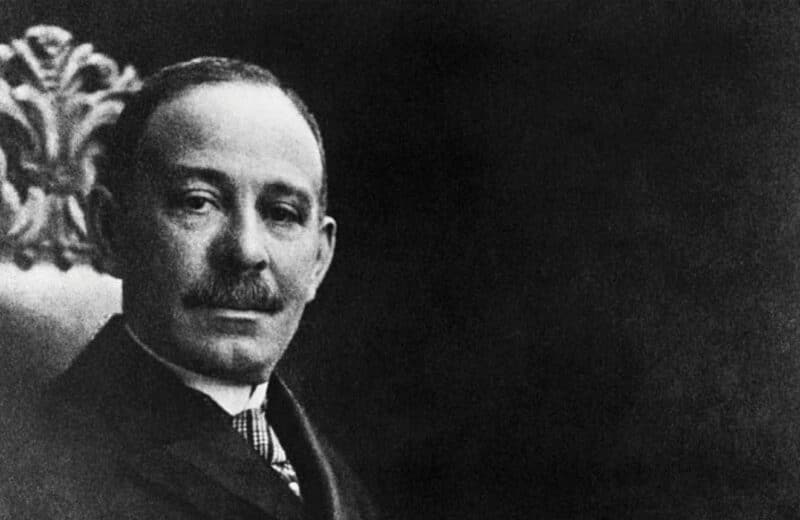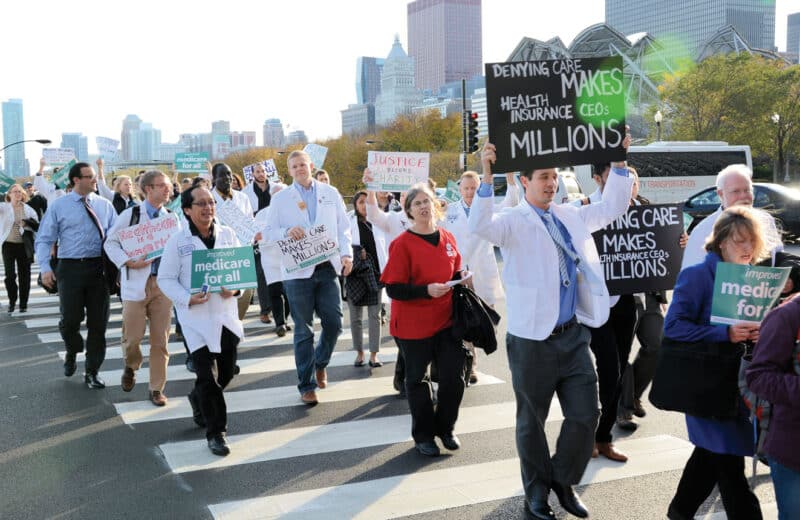Drugs, the brain and how to fix the cycle of substance abuse
Taylor was a 14-year-old high school freshman when she unwittingly used OxyContin for the first time. The South Florida teen, who asked that her last name not be used for privacy, had been having menstrual cramps in math class when another student offered her some pills he said would help her feel better.
“As soon as I took them, I felt like I was on a cloud,” Taylor, now 20, says. Soon, she was sneaking out of the house and doing whatever she could to find the potent prescription opioid. Six months later, she shot up heroin for the first time. “It was a whole other feeling,” she recalls, “like there was nothing in the world that could touch me in that moment.”
Taylor’s subsequent spiral into addiction led to repeated overdoses — one near fatal — plus multiple stints in rehab, most recently at Timberline Knolls in Lemont. When we spoke to her in May, she had been sober for 10 months and had become an advocate for awareness about addiction, passionate about helping other people.
The opioid crisis is continuing to wreak havoc and heartbreak in Chicago and across the nation. About 1,150 people died in Cook County in 2017 due to drug overdoses (958 related to opioids), compared to 629 drug deaths in 2013 (486 from opioids), according to the Illinois Department of Public Health. Overdoses, largely from opioids, are the leading cause of death for individuals under age 50 nationwide, according to data from the Centers for Disease Control and Prevention (CDC).
Despite the known dangers of opiates and other substances, people continue to risk their lives, upend their careers and destroy relationships for them. Understanding why starts with grasping drugs’ effects on the brain and whether they can be reversed.
The neurological effect of addictive substances
Scientists today “have a little bit better understanding of the disease of addiction and how an addicted brain functions,” though more research is needed, says Roueen Rafeyan, MD, chief medical officer of the non-profit Gateway Foundation, which has 14 addiction treatment locations in Illinois, including seven in the Chicago area.
When an individual takes a mind-altering substance, certain areas in the mid-brain are activated and flooded with dopamine, a neurotransmitter that creates feelings of pleasure. Narcotics can give a dopamine response up to 10 times higher than eating or sex, research shows.
Addiction involves the area of the brain associated with our primal drives. This area isn’t well-connected to the prefrontal cortex, the decision-making part of our brain that tells us not to drink or use drugs, Rafeyan says. But there are thousands of connections to the limbic system — the emotional part of our brain.
Depending on the substances used, it can take as little as a week for the brain’s circuits to develop an addictive response, says Tom Britton, president and CEO of the Gateway Foundation. Then, the brain begins to need more of the drug to function or else withdrawal symptoms develop that feel “like the worse flu you’ve ever had, multiplied,” Britton says.
Those at risk of addiction include people with a family history of the disease (if you have a parent with a use disorder, you’re twice as likely to develop one), psychological problems or a history of trauma, among other factors. Sometimes, though, people seem to get addicted through exposure alone, says Danesh Alam, MD, medical director of behavioral health at Northwestern Medicine Central DuPage Hospital.
“There is some evidence that a single use of opioids starts to rearrange the neural networks, [causing] the brain to rearrange itself and demonstrate more addictive behavior,” Alam says.
Rewiring the brain
Is there a way to change the brain circuitry formed during the addiction process and “unlearn” the addictive response? Possibly.
One potential treatment being studied is transcranial magnetic stimulation (TMS), a non-invasive treatment where electric currents are sent into the brain via a cap that rests on the head. The Food and Drug Administration (FDA) has approved TMS devices for the treatment of depression, but some researchers are exploring its potential for treating addiction as well.
Researcher Tommi Raij, MD, PhD, director of the Center for Brain Stimulation at the Shirley Ryan AbilityLab and associate professor at Northwestern University Feinberg School of Medicine, has been studying TMS and its use in addiction medicine. Together with an international group of researchers, Raij recently reviewed existing studies and found that repetitive TMS showed potential as “an innovative, safe and cost-effective treatment” for some substance use disorders.
“It’s quite promising,” Raij says. “We are now at the stage where we know it seems to be working better in many cases than existing therapies, but we need firm proof.” That means more research, particularly double-blind studies where neither researchers nor study participants know if real or placebo TMS is being used.
In addition to medication-assisted treatments, more traditional therapies may help change the brain, too, Britton says. Talk therapies, such as dialectical behavior therapy, have been shown on PET scans to change brain circuitry after patients have learned other coping skills, he says.
Regardless of how people are able to get off substances, the longer they can stay straight, the easier it becomes to maintain sobriety, says Laura Parise, MD, a psychiatrist and addiction specialist at NorthShore University HealthSystem in Evanston. Staying away from substances, she says, helps “dampen the hyperarousal over-response” in the brain. Whether this behavior alone can rewire brain circuitry she can’t say — the evidence is “not quite there” yet.
Today’s treatment options
In the past, abstinence-based therapies such as 12-step programs were considered all that was needed to prevent and treat substance use disorders. But today, medications are commonly given as well. These include naloxone, which can reverse opioid overdoses, as well as a variety of medications that allow a person with a substance use disorder to gradually wean off of opioids or other substances.
“We’re learning more and more that if medication-assisted therapy is not added to abstinence-based approaches, then the failure rate is pretty high,” Alam says.
Examples of medications used in this therapy include naltrexone (Vivitrol), a monthly injection used to treat fentanyl addiction; buprenorphine; and methadone, which requires patients to make daily visits to methadone clinics. While these drugs are considered opiates, they block the high from more dangerous drugs while helping reduce withdrawal symptoms, allowing patients to wean off the substance they are addicted to.
A new medication, lofexidine hydrochloride (Lucemyra), is the first non-opioid treatment for management of opioid withdrawal symptoms and was approved by the FDA in May 2018. It has no addictive properties and is an alternative short-term treatment for abrupt withdrawal.
Patients may need to be on some medications for the long term, depending on how long they used substances and how their brains were altered as a result. Others can eventually taper off of them.
Addiction treatment is most successful when psychiatric issues are also addressed simultaneously, Rafeyan says. “I’ve seen patients who keep relapsing over and over” because the treatment focus was exclusively on addiction, he says.
In her 25 years in the field, Parise says she has seen patients succeed in beating addiction using a variety of methods. “There’s no one panacea to change everyone’s brain,” she says.
What more needs to be done?
Chicago has enough programs to handle the opioid crisis, Alam says. The problem is access; more specifically, a lack of insurance that prevents addicts from using treatment resources.
“This has become a disorder of the haves and have-nots, because if you have great insurance, it’s easier to find programs to work with,” he says. For patients with Medicaid, Medicare or no insurance, “it is very challenging.”
And then there’s the issue of public awareness, which continues to be lacking. Addiction needs to be destigmatized and recognized as a chronic disease, Alam says, both among the general public and even, in some cases, among those in the medical field. Patients, he adds, are too often considered to be “choosing” to be addicts, with an expectation that they should just be able to quit, when it’s much more complicated than that.
People with substance use disorders need to realize help is available and that it’s acceptable to seek it. Adds Rafeyan: “It’s okay to come forward; it’s okay to talk to your doctor; it’s okay to reach out for help. You don’t have to suffer with this.”
Stopping the Surgery-Opioid Pipeline

At NorthShore University HealthSystem, patient use of opioids after some elective surgeries has been cut dramatically, with half of patients not taking any opioids at all and many others taking only a tablet or two. Anesthesiologist Rebecca Blumenthal, MD, helped bring the Enhanced Recovery After Surgery (ERAS) program to NorthShore a couple of years ago, a program she says is also in use at other major hospitals in the city.
One of the key components of the NorthShore ERAS program is that, during surgery, an anesthesiologist injects long-acting local anesthetics around targeted nerves, which provides pain control for a few days after the procedure. Patients can take non-opioid medications such as acetaminophen, ibuprofen and gabapentin for post-operative comfort. They’re also given juice and other carb-heavy drinks up to two hours prior to surgery and food soon after surgery so they can better withstand the stress of surgery and not be in a fasted state.
These and other measures were designed primarily to cut length of stay and complication rates, Blumenthal says. The big drop in opioid use was a welcome surprise.
“I think we were all stunned and pleased as to how significant an opiate reduction we had,” she says.
So far at NorthShore, ERAS has been used for colorectal surgery, hernia repair and breast reconstruction with implants. Soon to follow are open hysterectomy, elective cesarean section, spinal fusion and prostatectomy.













